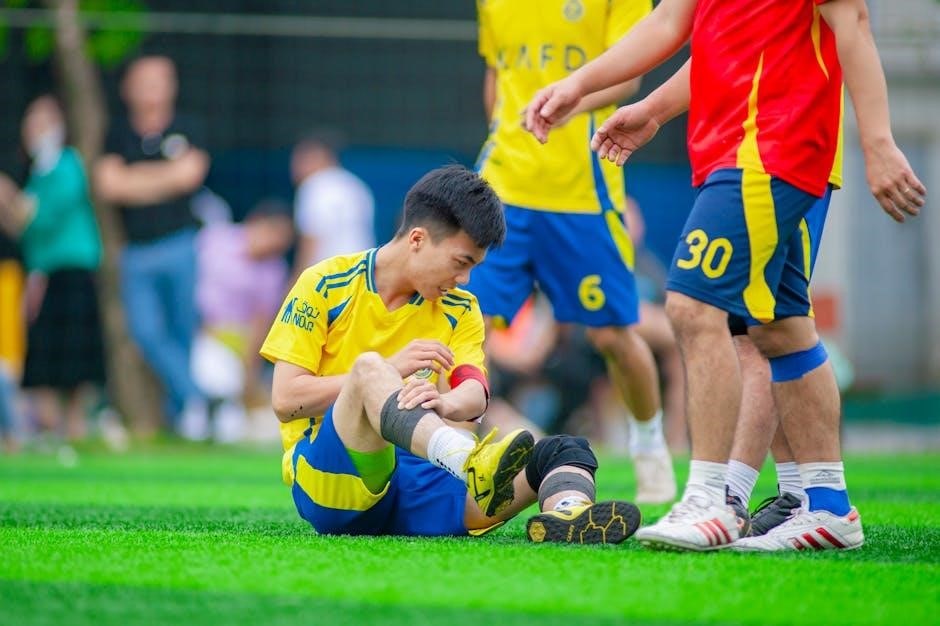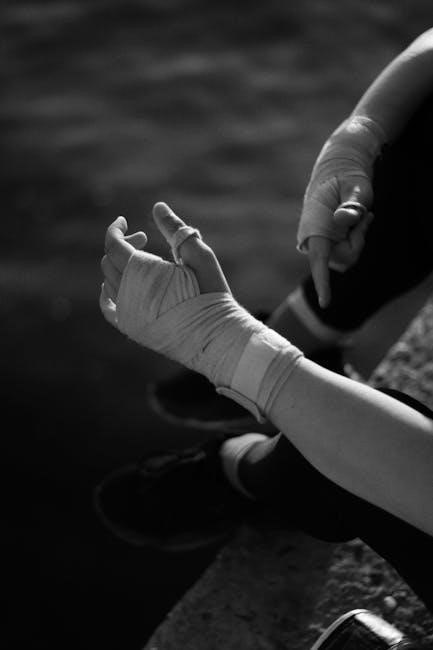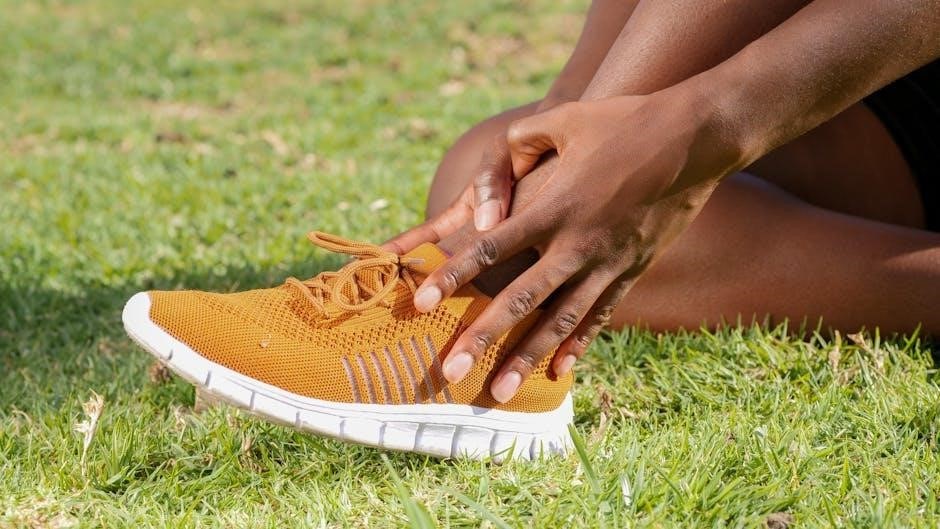Exercises for brachial plexus injury are available in pdf format online, providing

guidance on rehabilitation and recovery, helping to prevent further problems
and strengthen muscles, with clear instructions and illustrations
Designing a Treatment Plan
A treatment plan for brachial plexus injury exercises should be designed by a physiotherapist, taking into account the individual’s specific needs and goals. The plan should include a combination of exercises and therapies to help prevent further problems and strengthen recovering muscles. A physiotherapist will assess the individual’s condition and create a personalized plan, which may include exercises to improve range of motion, strength, and flexibility. The plan should also include strategies to manage pain and prevent further injury.
Regular progress monitoring is essential to ensure the treatment plan is effective and to make any necessary adjustments. A physiotherapist may use various techniques, such as massage and sensory training, to help the individual recover from a brachial plexus injury.
The treatment plan should be tailored to the individual’s lifestyle and abilities, and should include a clear schedule for exercises and therapies. By working with a physiotherapist to design a treatment plan, individuals with brachial plexus injuries can maximize their chances of a successful recovery.
- Assessment of the individual’s condition
- Creation of a personalized treatment plan
- Regular progress monitoring

The treatment plan should be designed to help the individual achieve their goals and improve their overall quality of life.

Benefits of Brachial Plexus Injury Exercises
Exercises provide pain relief, improve mobility and strengthen muscles effectively always.
Preventing Further Problems
Exercises for brachial plexus injury play a crucial role in preventing further problems such as development delay and joint stiffness. A well-structured treatment plan, including exercises and physical therapy, can help prevent these complications. The treatment plan is designed to meet the specific needs of the individual, taking into account the location and severity of the injury. By starting physiotherapy early, individuals can reduce the risk of long-term damage and improve their overall prognosis. Regular exercise and physical therapy can also help prevent contractures, which are a common complication of brachial plexus injuries. Additionally, exercises can help improve range of motion, reducing the risk of further injury or complications. A physiotherapist can provide guidance on the best exercises to prevent further problems and promote recovery. With a comprehensive treatment plan, individuals can minimize the risk of further complications and optimize their recovery. By incorporating exercises into their daily routine, individuals can take a proactive approach to preventing further problems and achieving the best possible outcome. This can include a combination of stretching, strengthening, and mobility exercises, all of which can be found in a brachial plexus injury exercises pdf.
Strengthening Recovering Muscles
Strengthening recovering muscles is a critical component of brachial plexus injury rehabilitation. Exercises specifically designed to target the affected muscles can help improve strength, flexibility, and range of motion. A physiotherapist can create a personalized exercise program, including a variety of stretches and strengthening exercises, to help individuals regain muscle function. These exercises can be found in a brachial plexus injury exercises pdf, which provides a comprehensive guide to rehabilitation. The exercises are designed to be progressive, meaning they become more challenging as the individual’s strength and flexibility improve. This helps to ensure that the muscles are consistently challenged, promoting optimal recovery. By incorporating strengthening exercises into their daily routine, individuals can accelerate their recovery and improve their overall functional ability. Regular exercise can also help reduce muscle atrophy, which is a common complication of brachial plexus injuries. With a focus on strengthening recovering muscles, individuals can regain independence and resume their normal activities. A brachial plexus injury exercises pdf can provide a valuable resource for individuals seeking to strengthen their recovering muscles and achieve a full recovery. The exercises can be modified to suit individual needs, ensuring a safe and effective rehabilitation process.

Rehabilitation Process
Rehabilitation involves exercise therapy and sensory training to promote recovery and functional ability, with a focus on individualized treatment plans and progressive exercises, found in a brachial plexus injury exercises pdf, to support the rehabilitation process effectively always.
Complex Composition of the Brachial Plexus
The brachial plexus is a complex network of nerves that originates in the spinal cord and extends into the arm, providing motor and sensory function to the shoulder, elbow, wrist, and hand. This complex composition makes it challenging to diagnose and treat brachial plexus injuries, as the location and severity of the injury can vary greatly. The brachial plexus is composed of five nerve roots, which merge to form three trunks, six divisions, and three cords, ultimately giving rise to five peripheral nerves that innervate the arm. Due to this complex anatomy, a clear understanding of the brachial plexus is essential for developing effective treatment plans, including exercise therapy and sensory training, as outlined in a brachial plexus injury exercises pdf. By understanding the complex composition of the brachial plexus, healthcare professionals can better navigate the challenges of diagnosis and treatment, and provide individualized care to patients with brachial plexus injuries. This knowledge is crucial for promoting optimal recovery and functional ability, and for minimizing the risk of long-term complications. With a comprehensive understanding of the brachial plexus, patients can receive targeted and effective treatment, and achieve the best possible outcomes. The complexity of the brachial plexus requires a thoughtful and multidisciplinary approach to care, and a brachial plexus injury exercises pdf can provide a valuable resource for patients and healthcare professionals alike.
Exercise Therapy and Sensory Training
Exercise therapy and sensory training are essential components of rehabilitation for brachial plexus injuries, and can be found in a brachial plexus injury exercises pdf. These therapies aim to promote nerve regeneration, improve muscle strength and function, and enhance sensory perception. A qualified physiotherapist or occupational therapist can design a personalized exercise program, tailored to the individual’s specific needs and goals. This program may include a range of exercises, such as passive and active range of motion, stretching, strengthening, and proprioception training. Sensory training is also crucial, as it helps to improve sensation and perception in the affected arm and hand. This can be achieved through various techniques, including sensory stimulation, desensitization, and sensory integration. By combining exercise therapy and sensory training, individuals with brachial plexus injuries can optimize their recovery and achieve the best possible functional outcomes. A brachial plexus injury exercises pdf can provide a comprehensive guide to these therapies, including detailed instructions, illustrations, and progression criteria. With the help of a healthcare professional and a well-structured exercise program, individuals can make significant progress and improve their overall quality of life. Regular practice and dedication to the exercise program are essential for achieving optimal results.